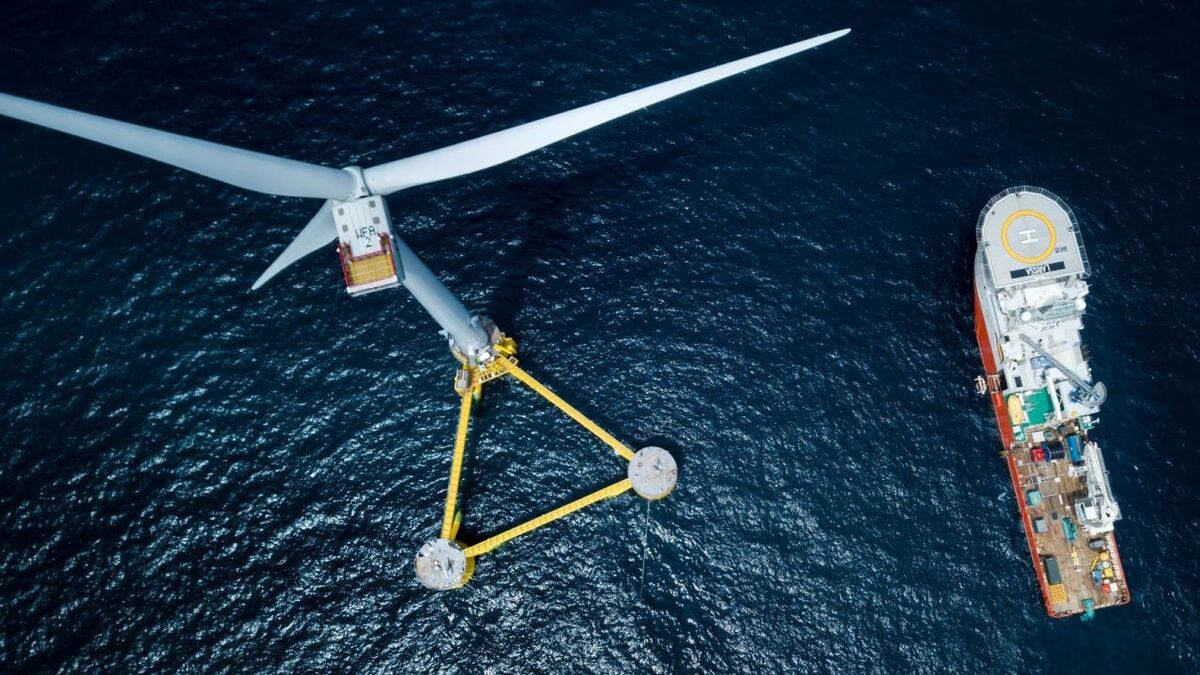The UK could have a floating wind workforce of up to 67,000 people by 2040, according to a new report
The report, produced by Opergy Ltd in partnership with the Offshore Renewable Energy Catapult’s Floating Offshore Wind Centre of Excellence predicts that, with a base case scenario of 18 GW deployed, the UK could have a floating wind workforce of at least 31,000 people by 2040, potentially many more.
The recently published Floating Offshore Wind People, Skills and Vocations report maps out the key skills and jobs required to develop, deliver, operate and maintain a floating offshore windfarm. The report uses this information to future-cast the industry’s people, skills and vocation requirements needed in the UK by 2040 for a range of deployment scenarios.
Using a High, Base and Low Case floating offshore wind growth forecast based upon previous work carried out by the Floating Offshore Wind Centre of Excellence, the report identifies a need for between 22,000 and 67,000 in the active workforce by 2040. This number will depend on the deployment strategy pursued by the UK.
The report also assesses current and projected future access to the skills needed. Using the information, it can be determined where skills access could be constrained in future and the knock-on effects for the timely and cost-effective delivery of floating wind projects.
Key shortfalls in skills and jobs have been identified in a number of areas. This includes development and consenting, project management, electrical and high voltage electrical systems (including cable jointing), and a range of vocations and skills associated with fabrication and advanced manufacturing. More broadly, there is a shortfall in digital skills across all areas and, to a lesser extent, most engineering disciplines.
The importance of minimising barriers for transitioning skills from the traditional oil and gas sector and military to the floating offshore wind sector has also been highlighted in the report. This is particularly relevant to marine operations and maintenance activities.
Opergy director and one of the authors of the report, Martin Dronfield said, “Floating offshore wind offers huge opportunities, including supporting the UK in reaching net zero by 2050.
“The scale of the opportunity must not be underestimated. By 2040, we could see over 31,000 active jobs in the industry for a base case deployment scenario of 18 GW. While it is clear the UK has the potential to be the world leader in floating wind, it also highlights it is vital we address our potential skills shortage to achieve this.”
The report identifies a number of opportunities to address the challenges ahead. This includes the establishment of dedicated training centres close to ports and fabrication facilities (similar to approaches used in oil and gas and, more recently, nuclear) and accelerating the work to efficiently transition workers from oil and gas to offshore renewables. In particular, the areas of subsea engineering and marine operations are highlighted.
ORE Catapult head of floating wind Ralph Torr said, “Access to the right skills will be vital to the success of floating offshore wind in the UK and internationally. The UK already has experience in offshore wind and oil and gas.
“Combined, these skills sit at the heart of what we need to deliver floating offshore wind projects. However, the deployment of floating offshore wind between 2030 and 2050 will be unprecedented in its speed and scale.
“As such, we need to ensure we play an active role in developing and sharing skills, knowledge and experience. We look forward to creating a large, highly skilled and flexible workforce to deliver our offshore energy needs to 2050 and beyond.”
RenewableUK deputy chief executive Melanie Onn said, “This report is timely as it highlights the wide range of unique skills needed to enable us to scale up floating wind successfully in the years ahead.
“It shows there are the gaps in our current workforce which we must address immediately so we can build up an innovative new industry in the UK, including a vibrant supply chain. This will provide opportunities for us to export our goods and services around the world, as we are a global leader in this cutting-edge technology.”
“The offshore wind sector as a whole is set to employ 100,000 people by the end of this decade. Floating wind has a key role to play in the massive ramping up of capacity we need to stay on track to reach net zero.
“We need all parts of the energy sector to work together to get us there. This is why, for example, we’re encouraging workers with transferable skills from the oil and gas sector to bring their valuable expertise to floating wind.”






